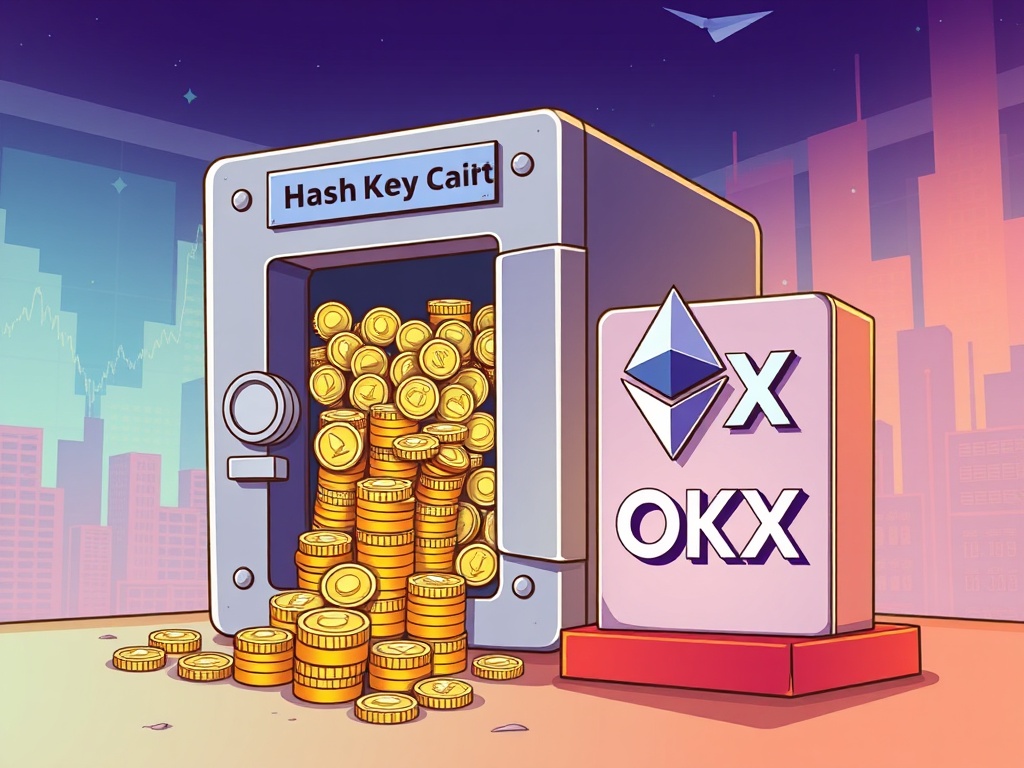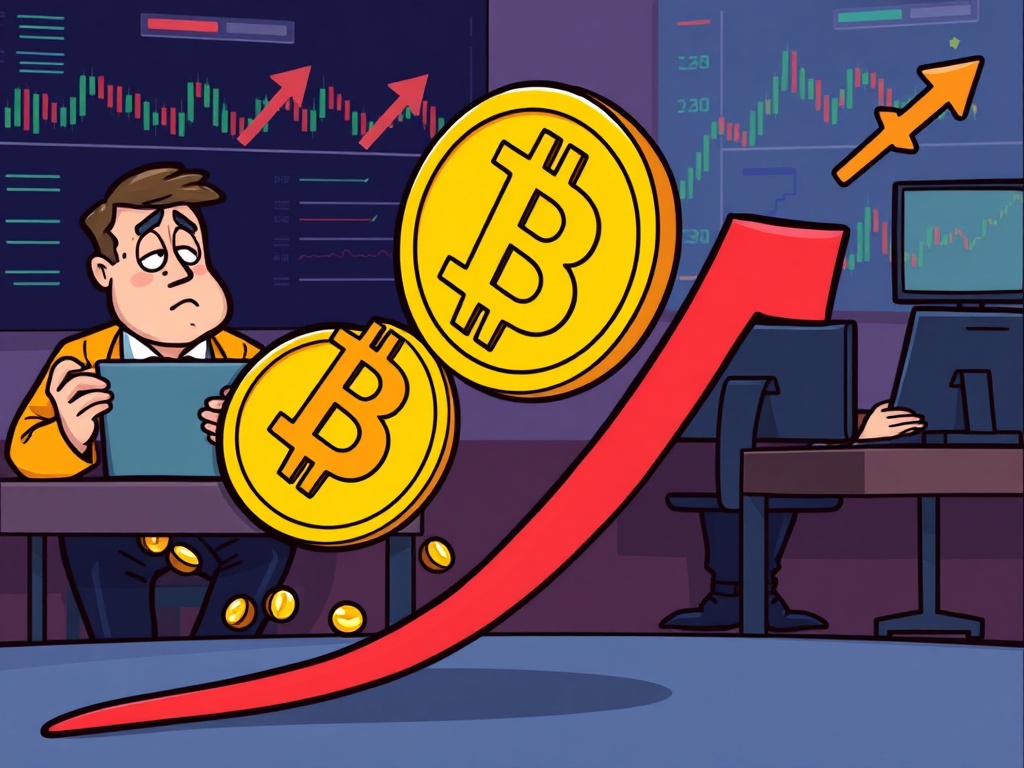BitcoinWorld

Crypto Safe Harbor: Crucial Proposal Offers Hope for US Crypto Rules
The world of cryptocurrency in the United States often feels like navigating choppy, uncharted waters. For innovators, developers, and investors alike, the lack of clear guidelines from regulators has been a persistent challenge. Enter SEC Commissioner Hester Peirce, often dubbed ‘Crypto Mom’ for her forward-thinking stance on digital assets. She’s once again stepped onto the scene, this time proposing a potential beacon of light: a crypto safe harbor. This isn’t just a casual suggestion; it’s a detailed framework aimed at providing clarity and fostering innovation within the US while still safeguarding investors.
What Exactly is the Proposed Crypto Safe Harbor?
At its core, Commissioner Peirce’s proposal is about creating a temporary window of regulatory relief for crypto projects. Think of it like a grace period. The idea, which she has discussed and refined over several years, is to give networks and development teams a chance to build, mature, and achieve decentralization without the immediate threat of being deemed an unregistered securities offering under current laws. According to reports, including one from @blocknewsdotcom on X following the ‘SEC Speaks’ event, her latest articulation of the concept includes specific requirements:
- A time limit: Projects would have a defined period (often suggested as three years) to develop their network and achieve functional decentralization.
- Disclosure obligations: Projects would need to make specific, public disclosures about their network, development plans, code, and efforts towards decentralization.
- Investor protection: Measures would be in place to protect participants, potentially including limits on resale or clear risk warnings.
- Good faith effort: Teams must genuinely work towards network maturity and decentralization, not just sit idle.
The fundamental goal? To acknowledge that many crypto networks start centralized but aim to become decentralized ecosystems. The safe harbor would provide a legal space for this crucial transition to occur, recognizing that applying traditional securities laws too early might stifle promising technology.
Why is a Shift in SEC Crypto Regulation Being Advocated?
The current state of SEC crypto regulation in the U.S. is frequently criticized as being based on ‘regulation by enforcement.’ This means the SEC primarily provides guidance on what is acceptable or not by taking legal action against companies or projects it believes have violated existing securities laws. While enforcement is a necessary tool, relying on it as the primary method of regulation creates significant uncertainty.
Here’s why many in the industry and even within the SEC (like Peirce) see this as problematic:
- Lack of Proactive Guidance: Projects often don’t know if they are compliant until they are investigated or sued.
- Stifled Innovation: Startups are hesitant to build and launch in the U.S. due to the potential legal risks and costs.
- Investor Confusion: Uncertainty about which assets are securities and which are not makes it harder for investors to understand their rights and risks.
- Competitive Disadvantage: Other jurisdictions are developing clearer frameworks, potentially attracting crypto businesses away from the U.S.
Commissioner Peirce’s safe harbor proposal is a direct response to this environment, suggesting a structured, proactive path forward rather than relying solely on retrospective enforcement actions.
Key Elements of the Hester Peirce Crypto Framework
Commissioner Peirce’s vision for a safe harbor is quite detailed, reflecting her deep engagement with the crypto space. Her proposal goes beyond just a time limit, incorporating mechanisms designed to ensure transparency and investor awareness during the development phase. Here are some specific elements she has highlighted:
- Public Disclosures: Projects would need to file a notice of reliance on the safe harbor and make key information publicly available. This includes details about the network, tokenomics, code repository access, and a plan for achieving decentralization.
- Network Maturity: The safe harbor period is intended for projects actively building a functional network. Simply issuing tokens without development wouldn’t qualify.
- Restrictions on Resales: To prevent purely speculative trading by retail investors before the network is mature, there might be restrictions on how and to whom tokens can be resold during the safe harbor period.
- Clear Risk Warnings: Investors participating during this phase would need to receive prominent warnings that the network is still under development and carries significant risks.
- Exit Report: At the end of the safe harbor period, projects would need to file a report explaining how they believe they have achieved network maturity or, if not, how they plan to handle remaining tokens and obligations (an ‘exit ramp’).
This framework attempts to strike a balance: giving projects breathing room to build while ensuring investors aren’t left completely in the dark or without recourse.
Navigating the Path to Clear US Crypto Rules: Challenges and Possibilities
While the concept of a crypto safe harbor is appealing to many, implementing it faces significant hurdles. The path to clear US crypto rules is complex, involving not just the SEC but also Congress and other regulatory bodies.
Here are some challenges:
- Defining ‘Decentralization’: There’s no universally agreed-upon definition of when a network is ‘sufficiently decentralized’ to no longer be considered a security under the traditional Howey Test framework.
- Preventing Abuse: Critics worry that bad actors could exploit a safe harbor period to raise funds without ever intending to build a functional network or achieve decentralization.
- Internal Disagreement: Commissioner Peirce’s view is not universally shared within the SEC or other parts of the U.S. government. Chairman Gary Gensler, for instance, has repeatedly stated his belief that most crypto tokens are securities under existing law.
- Legislative Action: Ideally, such a significant shift in regulatory approach might require action from Congress, which has been slow to pass comprehensive crypto legislation.
Despite these challenges, the proposal keeps the conversation going and offers a concrete alternative to the status quo. It provides a potential model for how regulators could engage constructively with the evolving digital asset space.
Impact on Digital Asset Regulation and the Future
Should a version of the crypto safe harbor proposal ever be adopted, it could have a transformative impact on digital asset regulation in the United States. The most significant potential benefit is the fostering of innovation. By providing a clearer, albeit temporary, regulatory path, more legitimate projects might choose to build and operate in the U.S., attracting talent, investment, and economic growth.
Here’s a look at the potential impact:
| Aspect | Current State (Regulation by Enforcement) | Potential with Safe Harbor |
|---|---|---|
| Regulatory Certainty | Low for many projects, especially during initial phase | Increased during the safe harbor period for compliant projects |
| Innovation Environment | Cautious, risk-averse for new token projects | More conducive to experimentation and network building |
| Investor Information | Often inconsistent or lacking for early-stage tokens | Mandatory, standardized disclosures required during safe harbor |
| U.S. Competitiveness | Risk of falling behind jurisdictions with clearer rules | Potential to attract and retain crypto talent and businesses |
Commissioner Peirce also specifically mentioned certain types of assets, suggesting potential exemptions or different treatment for airdrops, NFTs, and stablecoins that lack investment contract characteristics. This acknowledges the diversity within the digital asset ecosystem and the need for rules that aren’t a one-size-fits-all application of laws designed for traditional finance.
For crypto projects, the actionable insight is to pay close attention to these proposals and continue building with transparency and potential future compliance in mind. For investors, it reinforces the importance of understanding the underlying technology and the regulatory status of the assets they hold, even as discussions about clearer rules evolve.
Conclusion: A Step Towards Clarity?
Commissioner Hester Peirce’s persistent advocacy for a crypto safe harbor and clearer US crypto rules represents a crucial voice within the regulatory landscape. While her proposal is not yet official SEC policy, it offers a well-thought-out framework for balancing the need to protect investors with the desire to allow the innovative potential of digital asset regulation to flourish in the United States. It acknowledges the unique lifecycle of decentralized networks and proposes a pragmatic way to bridge the gap between initial fundraising/development and full network maturity.
The debate surrounding this proposal highlights the ongoing tension between applying existing laws to new technology and crafting bespoke rules that better fit the unique characteristics of crypto assets. Whether or not the safe harbor is ultimately adopted, Peirce’s work is instrumental in pushing the conversation forward, providing a potential blueprint for a future where regulatory clarity empowers innovation rather than hinders it.
To learn more about the latest crypto market trends, explore our article on key developments shaping digital asset regulation institutional adoption.
This post Crypto Safe Harbor: Crucial Proposal Offers Hope for US Crypto Rules first appeared on BitcoinWorld and is written by Editorial Team





